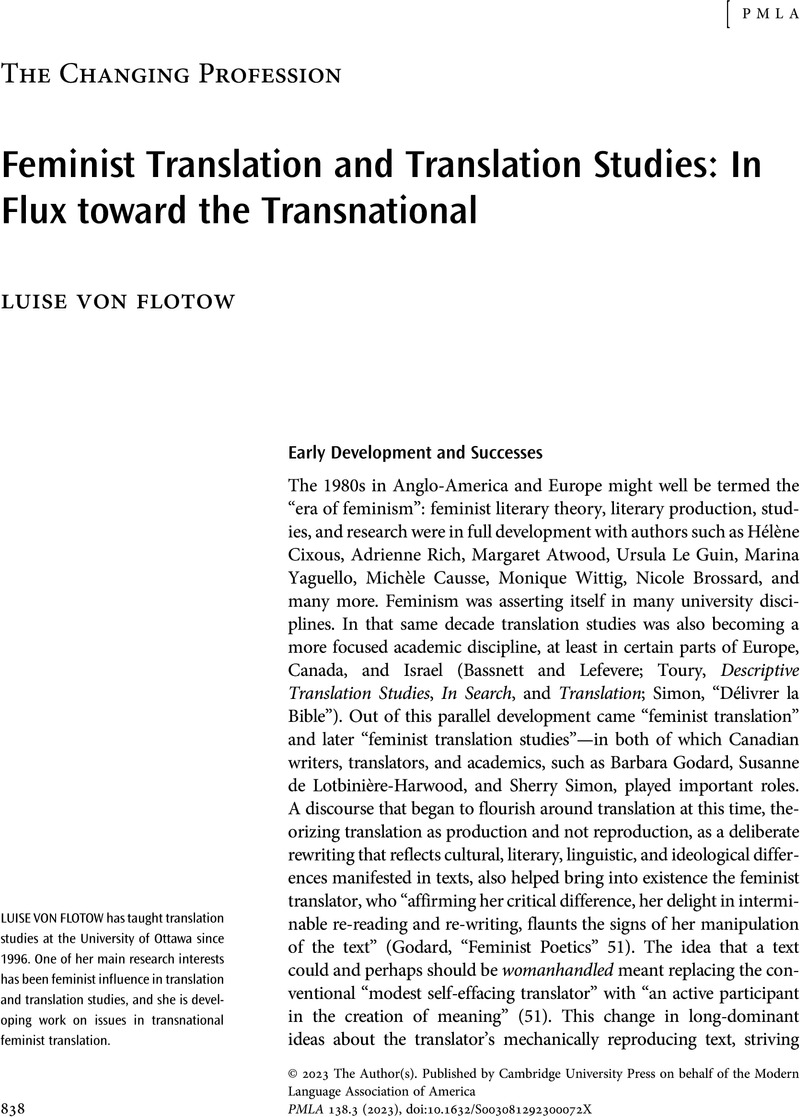Crossref Citations
This article has been cited by the following publications. This list is generated based on data provided by Crossref.
Scarpino, Cinzia
2024.
Willa Cather, Italy, and the visibility of the female translator.
Feminist Modernist Studies,
Vol. 7,
Issue. 2,
p.
117.
Berlose, Ilaria
2025.
Le genre en traduction : vers une traduction féministe intersectionnelle des écritures au féminin québécoises du français vers l’italien.
TTR,
Vol. 37,
Issue. 2,
p.
289.



